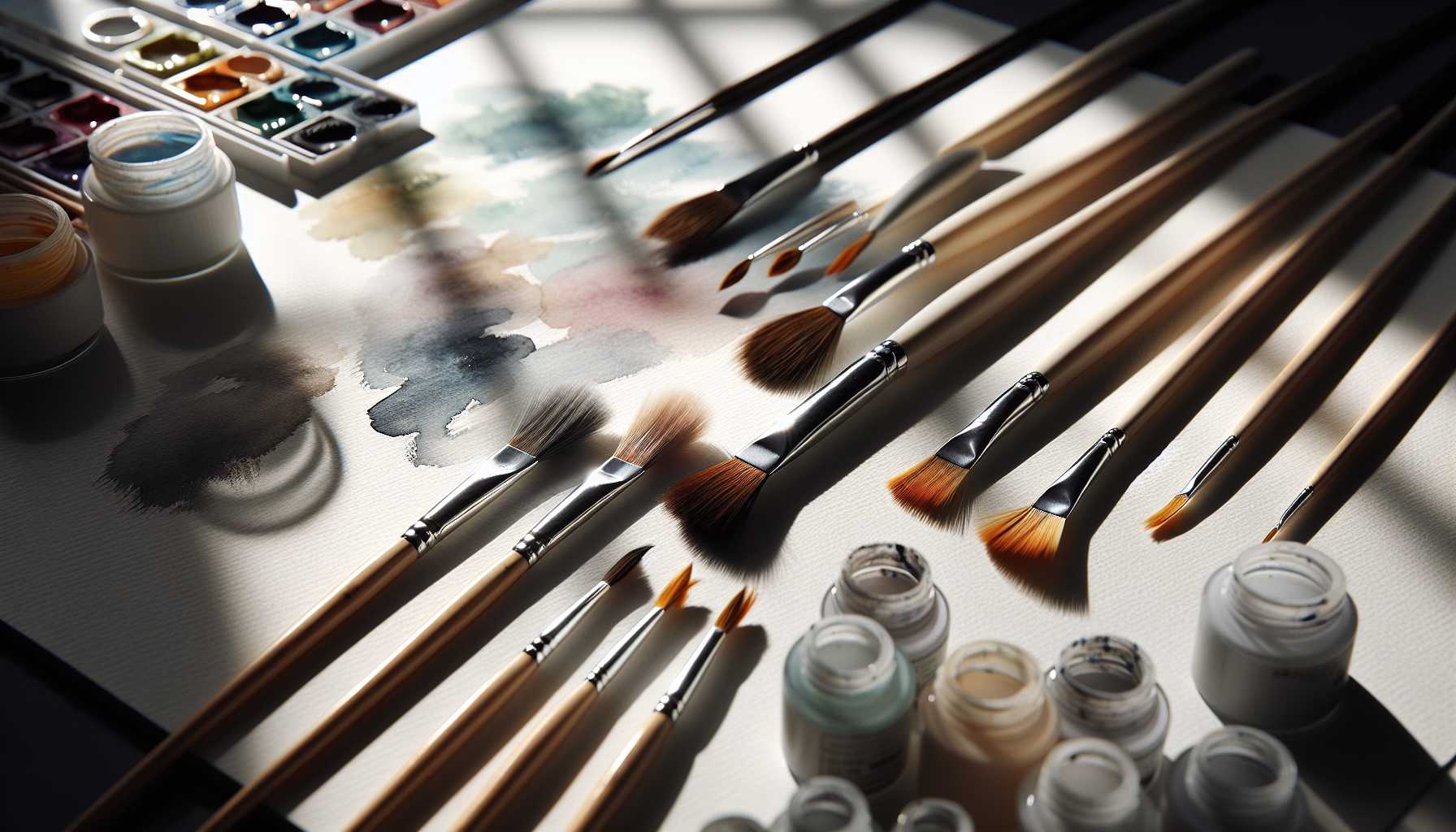Watercolor vs Acrylic Brushes: Which to Choose for Beginners

Watercolor vs Acrylic Brushes: A Beginner's Guide
Hello there, fellow art admirer! Are you feeling a touch overwhelmed in picking between watercolor and acrylic brushes? Fret not – I'm here to assist you! Let's delve into this topic and make it simple for you to arrive at the ideal choice for your artistic journey.
A Quick Summary of the Basics
First off, watercolor and acrylic brushes aren’t just different by name alone. Each of these is specifically tailored to work with their corresponding medium. They are akin to specialized tools, much like how a spoon is used for soup, rather than a fork!
Watercolor Brushes: The Delicate Titans
Their Unique Attributes
- Exceptionally soft bristles
- Outstanding water absorption
- Typically crafted from natural hair or synthetic materials
- Ideal for creating gentle strokes
Where They Excel
Ever marveled at the visually stunning flow of watercolors on paper? That’s exactly where these brushes prove their worth! They are excellent for creating the dreamy, translucent effects that are synonymous with watercolor paintings.
Acrylic Brushes: The Rugged Powerhouses
Noteworthy Characteristics
- Firmer bristles
- Enhanced durability
- Generally synthetic
- Excellent for applying thick paint layers
Their Ideal Usage
These robust brushes are your first choice for creating bold, textured strokes. They are like the trusty workhorses of the painting realm, unfazed by thick paint and capable of retaining their form.
Deciding Which Type to Select
Guidance for Absolute Rookies
If you're a novice, here's my friendly suggestion: * If you're starting with acrylics, opt for synthetic acrylic brushes * If watercolors are your initial choice, stick to soft synthetic watercolor brushes
Economical Tips
Art needn't drain your wallet! Begin with: * A round brush (either size 6 or 8) * A flat brush (half an inch) * A detail brush (size 0 or 1)
Common Slip-ups to Evade
Here’s how to avert some commonly made mistakes: * Refrain from using watercolor brushes for acrylics (they could get damaged) * Steer clear of using acrylic brushes for watercolors (they are too rigid) * Ensure not to leave brushes soaking in water
Brush Care and Upkeep
Extend extra care to your brushes: * Clean them post every use * Store them with bristles facing upwards * Shape them when they're wet
Wrapping Up
Bear in mind, there's no definitive "correct" choice – your painting style and objectives determine your brush preference. Start with fundamental brushes based on your chosen medium and advance your collection gradually. Most importantly, cherish every moment of your artistic journey!
Interested in sharing your experiences or have queries? Feel free to share in the comment section – I’d be thrilled to hear from you! Here’s to happy painting adventures! 🎨
Pro Tip: Several artists maintain a collection of both brush types. As you advance, consider doing the same!
[Consider including appropriate images of different brush types and their effects]